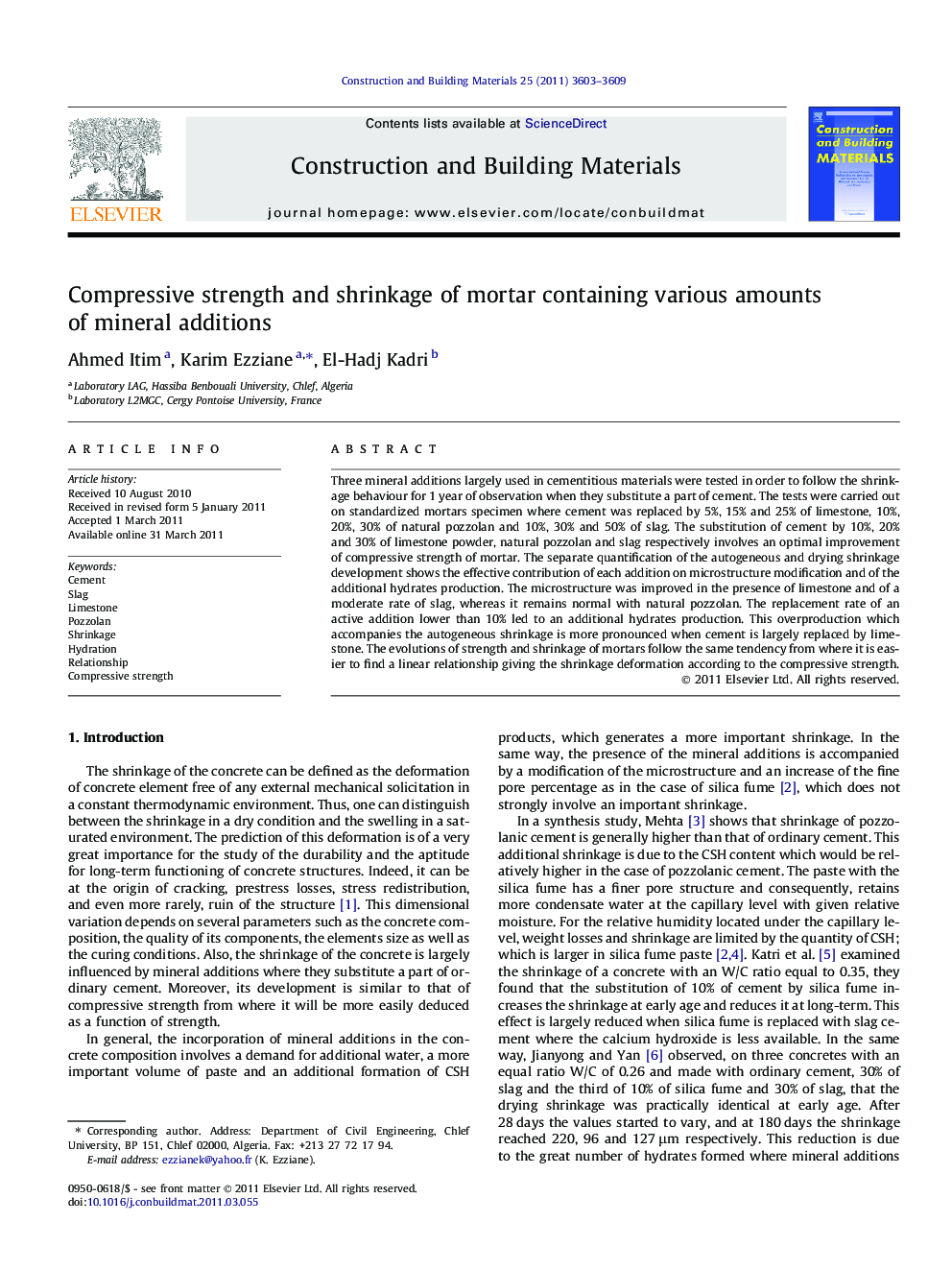| Article ID | Journal | Published Year | Pages | File Type |
|---|---|---|---|---|
| 259842 | Construction and Building Materials | 2011 | 7 Pages |
Three mineral additions largely used in cementitious materials were tested in order to follow the shrinkage behaviour for 1 year of observation when they substitute a part of cement. The tests were carried out on standardized mortars specimen where cement was replaced by 5%, 15% and 25% of limestone, 10%, 20%, 30% of natural pozzolan and 10%, 30% and 50% of slag. The substitution of cement by 10%, 20% and 30% of limestone powder, natural pozzolan and slag respectively involves an optimal improvement of compressive strength of mortar. The separate quantification of the autogeneous and drying shrinkage development shows the effective contribution of each addition on microstructure modification and of the additional hydrates production. The microstructure was improved in the presence of limestone and of a moderate rate of slag, whereas it remains normal with natural pozzolan. The replacement rate of an active addition lower than 10% led to an additional hydrates production. This overproduction which accompanies the autogeneous shrinkage is more pronounced when cement is largely replaced by limestone. The evolutions of strength and shrinkage of mortars follow the same tendency from where it is easier to find a linear relationship giving the shrinkage deformation according to the compressive strength.
► Compressive strength and shrinkage are measured for mortars made with blended cement. ► Cement was replaced by several replacement ratios of three mineral additions. ► Shrinkage values allow to identify mineral addition contribution to cement hydration. ► A linear relationship is found to predict shrinkage according to the strength value.
